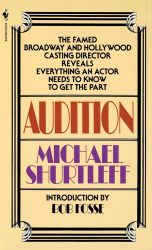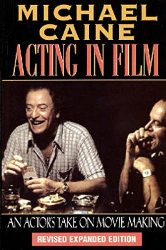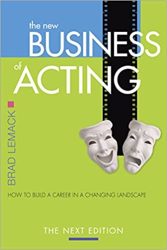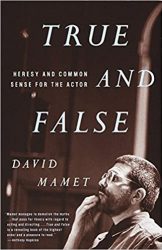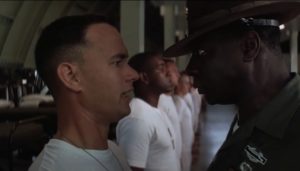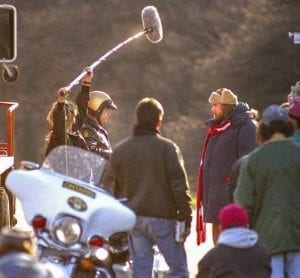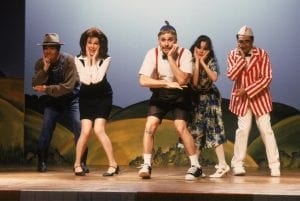
If you’ve read the article about what makes a good actor, you will see that a big part of acting well is being present in the moment and listening/reacting well to your scene partner. Therefore, you need to be able to be flexible in your responses without being distracted by thoughts about trying to remember your next line. What acting exercises can you use?
You can say your lines as fast as possible, repeat lines while varying emphases and imagining you’re saying them to different people, say your line with different emotions, and have emotional transitions during lines. These exercises will teach you flexibility so you can adapt to your scene partner.
Details about these acting exercises are given below. These are actually some of my go-to acting exercises so you can consider them tried-and-true.
1. Italian Run
An Italian Run is an exercise where you run through the lines in your script as quickly as possible, just forgetting about acting. You can do this just for your lines or you can do this together with a partner, going back and forth between lines.
Italian Runs are a great exercise to support acting because the exercise helps you get into a state where the words come naturally and your mind can afford to become focused entirely on acting, not on thinking what you’re supposed to say next. You can be more in the moment, more focused on the scene and your scene partner.
Another reason why Italian Runs are a great exercise is because, even though you may be comfortable with the lines you’ve memorized when you’re at home, in your bedroom, just talking to yourself, all that can change when you’re out there and all the cameras and people are focused on you. In those cases, it can be helpful if you can just go on autopilot and let the words come out by themselves because you’ve practiced them so much.
You can see actor Jeff Daniels describe this exercise and its importance in the video below.
By the way, if you want to improve your memorization, you can get ideas in the article about how actors memorize lines.
2. Repetition with Variation
Whereas in the first exercise we were focused only on the words and not on how they were said, in this second exercise we repeat things but say them differently every time. In other words, you take a line or a few words and you say them over and over, at least 100 times, and every time you play with emphasis and feeling.
One way of doing that is by emphasizing different words in the sentence (for example, “You talking to ME?” versus “You TALKING to me?”).
Another thing you can do is imagine saying the phrase to different people, because you know how we talk differently depending on who we’re talking to. For example, the way you say things when you’re talking to your parents is different from the way you say things when you’re talking to your friends. You can imagine many people and you can imagine how you would say your phrase to all those people.
A great thing about this exercise is that it helps you be more flexible with line delivery, which helps you be more sensitive to your scene partner in the scene. Remember that, in a scene, the way you act should be compatible with what your scene partner is doing, even if it is different from what you rehearsed. If you had expected your scene partner to say a line slowly but they said it very quickly, that can affect how you respond, and when you’ve done so many variations of saying your lines you have a lot of options for your response. You’re not stuck to one thing – you’ve done so many things that you’re okay with anything. You adapt well as a result.
In the quote below, Christopher Walken describes how he works on lines in a similar way, except he also varies rhythm:
“Go over the words, over and over, do them different ways, different inflections and rhythms. For me, rhythm is very important. I think we express ourselves as much with rhythm as with the words.” – Christopher Walken [full article]
3. Emotional Volleyball
Now let’s go beyond word emphasis and towards emotions. This exercise has two parts.
The first part of Emotional Volleyball is where you find five emotions that would make sense with your lines, and run your lines multiple times, changing the emotion each time. For example, let’s say that you’re playing Person B in the following dialogue:
Person A: Hey, what are you doing here?
Person B: Nothing, what about you?
We can say Person B’s lines defensively, kind of like snapping back at Person A, or we can say them very casually like they’re just buddies, or we can say them flirtatiously if Person B is attracted to Person A, or we can say them like Person B is scared but trying not to look scared, or we can say them in a distracted way as if Person B isn’t really thinking about the conversation because they’re preoccupied about something else.
The second part of Emotional Volleyball is the same as the first, except now you choose emotions that you think don’t make sense for the line. You can just randomly choose emotions from a list. Below is a sample list of 30 random emotions you can refer to.
- Happy
- Grateful
- Frantic
- Nervous
- Sad
- Embarrassed
- Ashamed
- Surprised
- Frightened
- Disgusted
- Excited
- Enraged
- Frustrated
- Calm
- Proud
- Confident
- Concerned
- Defiant
- Determined
- Loving
- Mean
- Puzzled
- Resentful
- Shy
- Skeptical
- Angry
- Smug
- Apologetic
- Relieved
- Curious
You can find things that don’t immediately make sense for the line. For our example line previously (“Nothing, what about you?”), you can try saying that gratefully or with any of the other emotions from the above list.
4. Emotion Change
Understand that emotions can change over time, and those times don’t necessarily have to be when the sentence stops. They can be in the middle of the sentence or at any time. Now that you can say a line with many different emotions, you can do combinations of emotions, by starting with one emotion and ending with another. Similar to the previous exercise, this exercise has two parts.
For the first part, find combinations of emotions that make sense (for starting with one emotion and ending with another) and run through them multiple times.
For example, for our line of “Nothing, what about you?” You can start the word “nothing” in a startled way and then end with “what about you” in a relieved way, as if you were initially afraid of getting caught but then you realized it’s only your friend, so you were relieved. Or you can start in a happy way and end in a curious way, as if you’re happy to see your friend here and then you’re wondering how they got here.
For the second part, use more challenging combinations of emotions that don’t immediately make sense to you. For example, for our line of “Nothing, what about you?” you can start resentful and then end excited.
Remember, the goal of these exercises is to learn to be flexible in terms of emotions so that you can adapt to your scene partner and portray emotions that make sense in the context of the scene, given the way your scene partner has delivered their lines.
For more exercises and details, you may be interested in the article about acting exercises you can do alone and the article about exercises meant to help shy actors.
